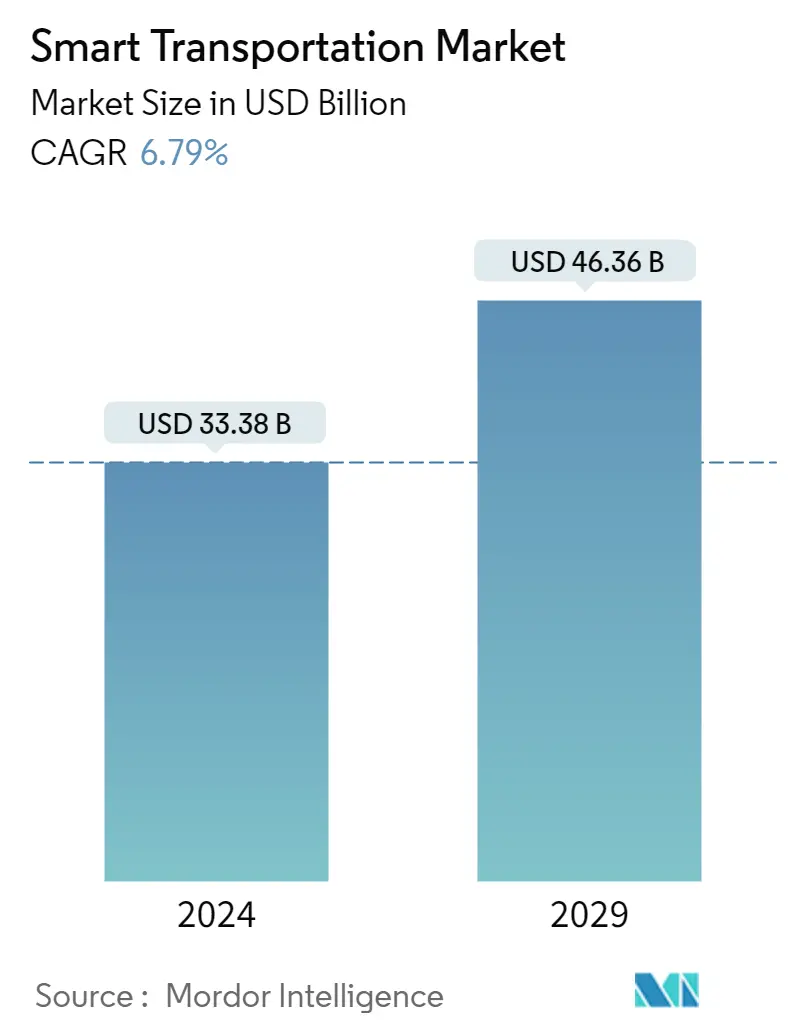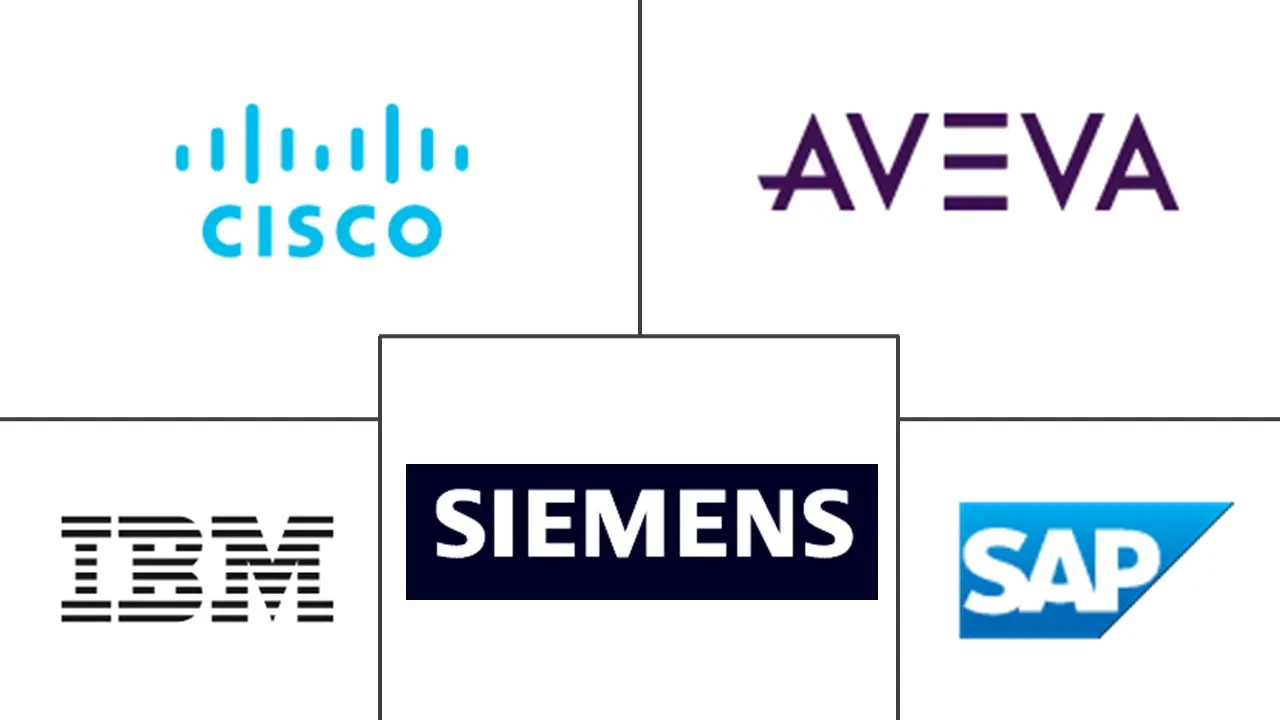Market Size of Smart Transportation Industry

| Study Period | 2019 - 2029 |
| Market Size (2024) | USD 33.38 Billion |
| Market Size (2029) | USD 46.36 Billion |
| CAGR (2024 - 2029) | 6.79 % |
| Fastest Growing Market | Asia Pacific |
| Largest Market | Europe |
Major Players
*Disclaimer: Major Players sorted in no particular order |
Need a report that reflects how COVID-19 has impacted this market and its growth?
Smart Transportation Market Analysis
The Smart Transportation Market size is estimated at USD 33.38 billion in 2024, and is expected to reach USD 46.36 billion by 2029, growing at a CAGR of 6.79% during the forecast period (2024-2029).
Increasing traffic volume, government initiatives aimed at decreasing the effects of greenhouse emissions, rising city projects, and the rise of megacities, urbanization, and population are some factors driving the market growth. The UN forecasts estimate that more than 70% of the world population will be urbanized by 2030, wherein 700 million people will reside in cities in India. These predictions serve as a unique opportunity to plan, design, and build an ecologically and economically sustainable new India. Additionally, urbanization has boosted national economies across the globe, as 75% of global economic production takes place in the cities.
- Increasing urbanization reflects the growing complexities in cities worldwide, with transportation needs being one of them. One of the primary issues the transportation market faces is resolving this complexity. The trend of a rising number of IoT and linked devices will continue with smart city projects during the projection period. The increased use of linked products like smart homes, smart meters, smart transportation, and smart lighting, among others that use IoT to communicate with one another, is expected to drive market expansion. In addition, it is predicted that by 2025, there will be more than 26 smart cities, with the majority existing in North America and Europe, delivering a significant drive to AI and IoT technology for adoption in smart cities.
- One of the primary objectives of innovative city development is smart mobility, which includes transportation. Creating efficient, flexible, and integrated transportation networks is vital to smart mobility. Smart mobility is a significant development driver in modern urban centers and may improve tourists' and inhabitants' everyday lives. By 2040, cities are expected to accommodate 65% of the world's population.
- Healthy modes of transportation, such as walking and cycling, are prioritized in urban mobility management. Mobility management also minimizes carbon emissions and provides communities with optimal traffic flow analysis.
- Traffic congestion is increasing due to exponential growth in suburban and rural populations relocating to cities and an equivalent increase in population concentration around metropolitan centers. Vehicle congestion in cities has increased as cities have grown in density, assisted by insufficient roadway designs and bad urban planning. For example, in 2022, the average American motorist wasted 51 hours in traffic congestion, or approximately an hour each week. This is 15 hours longer lost to traffic than previously, and all that time squandered in traffic jams costs the typical American motorist USD 869 in lost time, according to the mobility analytics firm Inrix's 2022 Global Traffic Scorecard.
- Further, in April 2022, the Ministry of Electronics and Information Technology (MeitY) launched several applications under the Intelligent Transportation System (ITS) as part of the InTranSE- II program to improve India's traffic scenario. An indigenous Onboard Driver Assistance and Warning System (ODAWS), Bus Signal Priority System, and Common SMart IoT Connectiv (CoSMiC) software were designed as a joint enterprise by the Centre for Development of Advanced Computing (CDAC) and the Indian Institute of Technology Madras (IIT-M). Mahindra and Mahindra was the industrial collaborator for the project. The government declared that ODAWS aims to improve the highway infrastructure as the number of vehicles and road speed has increased, exacerbating safety concerns.
- However, due to the need for a standardized strategy, smart transportation mixed with numerous aspects, such as software, hardware, and mobile network components, are produced by multiple manufacturers, resulting in compatibility concerns. Furthermore, communication protocols range significantly among nations, posing challenges for manufacturers in terms of worldwide acceptance of their products.

